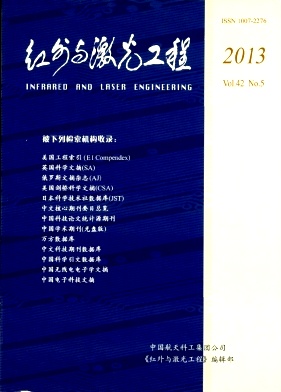|
[1]
|
Fan Jinxiang. Status quo and trend of infrared system and technologies for America's ballistic missile defense system[J]. Infrared and Laser Engineering, 2006, 35(5): 537-540.(in Chinese) |
|
[2]
|
|
|
[3]
|
Zhu Weigang, Hou Guojiang, Fei Shibing. Application of space-based lasers constellations for ballistic defense[J]. Infrared and Laser Engineering, 2004, 32(2): 558-563 (in Chinese) |
|
[4]
|
|
|
[5]
|
Ji T C, Kirnbarajan T, Yeddmlapudi M, et a1. Trajectory and launch point estimation for ballistic missiles from boost phase LOS measurements[C]//Proceedings of 1999 IEEE Aerospace Conference, 1999, 4: 425-442. |
|
[6]
|
|
|
[7]
|
|
|
[8]
|
Zhang Lewei, Chen Guiming, Xue Donglin. Summary of missile early warning satellite[J]. Tactical Missile Technology July, 2011(4): 117-121. |
|
[9]
|
|
|
[10]
|
Li Dun, Zhou Yiyu, Lv Tongguang, et al. Tactical parameter estimation of ballistic missile launch with space early warning system[J]. Journal of Astronautics, 2001, 22(6): 85-90. (in Chinese) |
|
[11]
|
|
|
[12]
|
Zhang Tao, An Wei, Zhou Yiyu, et al. The trajectory tracking method in boost phase using thrust acceleration profile[J]. Journal of Astronautics, 2006, 27(5): 386-389. (in Chinese) |
|
[13]
|
An Wei, Zhang Tao, Zhou Yiyu. The track capture of ballistic missile from satellite observations[J]. Journal of Electronics Information Technology, 2007, 29(11): 2677-2678. (in Chinese) |
|
[14]
|
|
|
[15]
|
Chen Ying, Cheng Zhen, Wen Shuliang. Study on method for simultaneously tracking and classifying ballistic missile in boost and post-boost phase[J]. Signal Processing, 2011, 27(5): 750-754. (in Chinese) |
|
[16]
|
|
|
[17]
|
|
|
[18]
|
Yu Jianguo, Liu Mei, Wu Yunli, et al. Ballistic missile tracking based on asymmetric interacting multiple model[J]. Systems Engineering and Electronics, 2010, 32(12): 2571-2575. (in Chinese) |
|
[19]
|
William J F. Interacting multiple model filter for tactical ballistic missile tracking[J]. IEEE Trans on Aerospace and Electronic Systems, 2008, 44(2): 418-426. |
|
[20]
|
|
|
[21]
|
Benavoli A, Chisci L, Farina A. Tracking of a ballistic missile with a-prior information[J]. IEEE Trans On Aerospace and Electronic Systems, 2007, 43(3): 1000-1016. |
|
[22]
|
|
|
[23]
|
Garrido E. Graphical user interface for a physical optics radar cross section prediction code[D]. Monterey, California: Naval Postgraduate School, 2000. |
|
[24]
|
|
|
[25]
|
Ye Qing, Sun Xiaoquan, Shao Li. Analysis of optimum detective wavebands for infrared early-warning satellite[J]. Infrared and Laser Engineering, 2010, 39(3): 390-393.(in Chinese) |
|
[26]
|
|
|
[27]
|
Filippo Neri. Introduction to Electronic Defense Systems[M]. Norwood, Massachusetts: Artech House, 2001. |
|
[28]
|
|
|
[29]
|
|
|
[30]
|
He You, Xiu Jianjuan, Zhang Jinwei. Radar Data Process and Application[M]. Beijing: Publishing Company of Electron Industry, 2005. (in Chinese) |
|
[31]
|
Hail D L. Mathematical Techniques in Multisensor Data Fusion[M]. London: Artech House Boston, 1992. |









 DownLoad:
DownLoad: